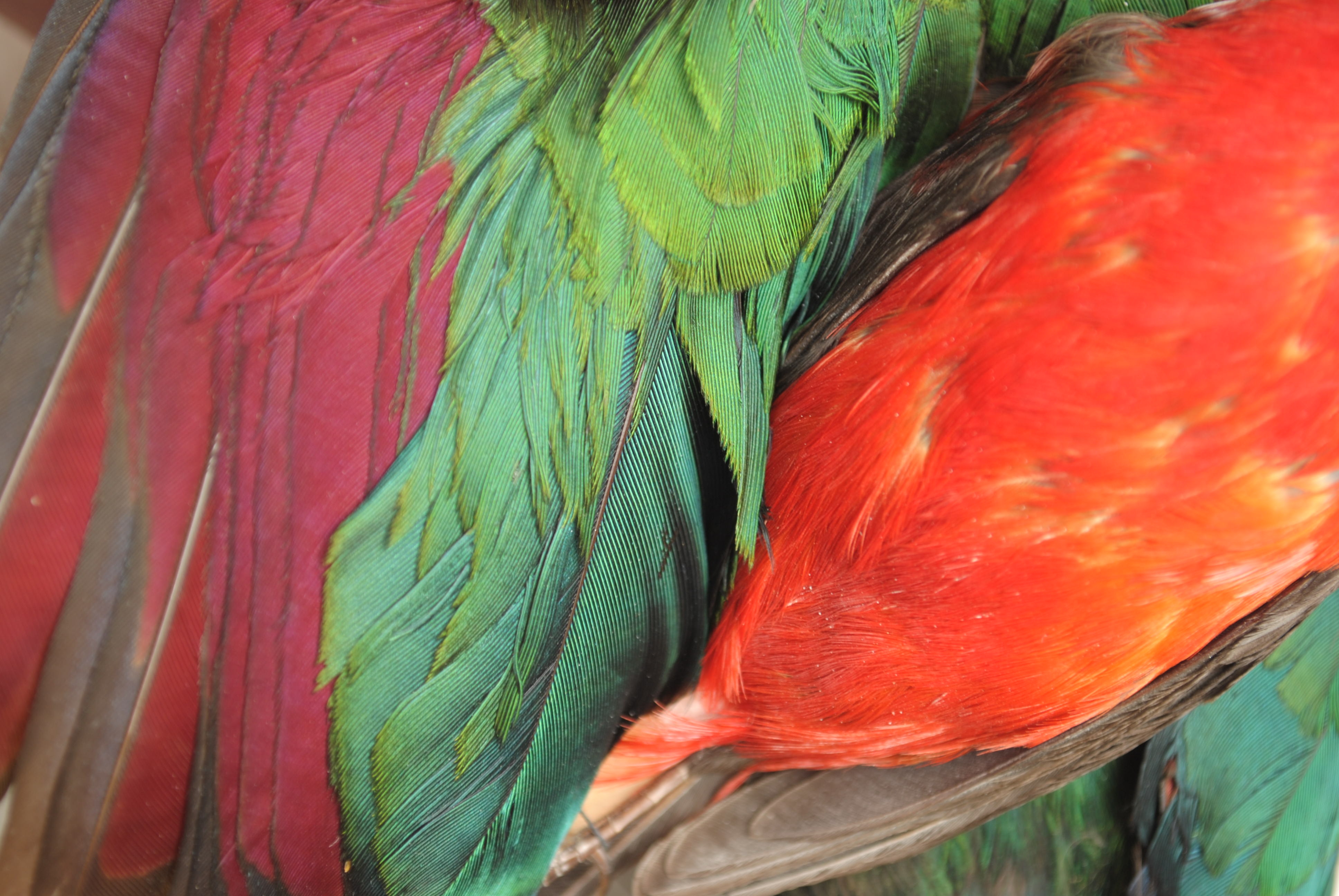turacin on:
[Wikipedia]
[Google]
[Amazon]
 Turacin is a naturally occurring
Turacin is a naturally occurring
 Turacin is a naturally occurring
Turacin is a naturally occurring red
Red is the color at the long wavelength end of the visible spectrum of light, next to orange and opposite violet. It has a dominant wavelength of approximately 625–750 nanometres. It is a primary color in the RGB color model and a seconda ...
pigment
A pigment is a powder used to add or alter color or change visual appearance. Pigments are completely or nearly solubility, insoluble and reactivity (chemistry), chemically unreactive in water or another medium; in contrast, dyes are colored sub ...
that is 6% copper
Copper is a chemical element; it has symbol Cu (from Latin ) and atomic number 29. It is a soft, malleable, and ductile metal with very high thermal and electrical conductivity. A freshly exposed surface of pure copper has a pinkish-orang ...
complexed to uroporphyrin III. Arthur Herbert Church
Sir Arthur Herbert Church (2 June 1834 – 31 May 1915) was a British chemist, expert on pottery, stones and chemistry of paintings, who discovered turacin in 1869 and several minerals, including the only British cerium mineral. He was also a tal ...
discovered turacin in 1869.
It is found only in the bird
Birds are a group of warm-blooded vertebrates constituting the class (biology), class Aves (), characterised by feathers, toothless beaked jaws, the Oviparity, laying of Eggshell, hard-shelled eggs, a high Metabolism, metabolic rate, a fou ...
family
Family (from ) is a Social group, group of people related either by consanguinity (by recognized birth) or Affinity (law), affinity (by marriage or other relationship). It forms the basis for social order. Ideally, families offer predictabili ...
Musophagidae, the turacos. Other birds derive their red coloration from carotenoid
Carotenoids () are yellow, orange, and red organic pigments that are produced by plants and algae, as well as several bacteria, archaea, and fungi. Carotenoids give the characteristic color to pumpkins, carrots, parsnips, corn, tomatoes, cana ...
s (bright and orange-reds) or phaeomelanin
Melanin (; ) is a family of biomolecules organized as oligomers or polymers, which among other functions provide the pigments of many organisms. Melanin pigments are produced in a specialized group of cells known as melanocytes.
There are ...
s (rusty and brownish-reds).
It is often assumed that this coloration will wash out when the birds are bathing or after heavy rains, but this is true only if the water used for bathing happens to be very alkaline
In chemistry, an alkali (; from the Arabic word , ) is a basic salt of an alkali metal or an alkaline earth metal. An alkali can also be defined as a base that dissolves in water. A solution of a soluble base has a pH greater than 7.0. The ...
.
The copper(II) uroporphyrin III pigment in turaco feathers was studied using electron spin resonance
Electron paramagnetic resonance (EPR) or electron spin resonance (ESR) spectroscopy is a method for studying materials that have unpaired electrons. The basic concepts of EPR are analogous to those of nuclear magnetic resonance (NMR), but the spin ...
by Jack Peisach first with Blumberg and later with Mims.
See also
* Psittacofulvin, a brightly colored red and yellow pigment unique toparrot
Parrots (Psittaciformes), also known as psittacines (), are birds with a strong curved beak, upright stance, and clawed feet. They are classified in four families that contain roughly 410 species in 101 genus (biology), genera, found mostly in ...
s
* Turacoverdin, green pigment unique to turacos
References
Biological pigments {{ornithology-stub